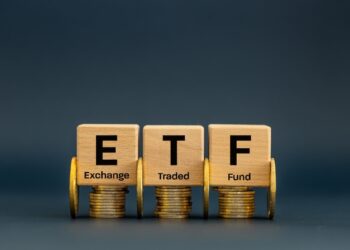A lot has happened in major asset classes over the last few years. With the benefit of hindsight, Dr Ron Bewley looks at how the major asset classes performed over the last two decades in terms of both capital growth and income.
In my opinion, too much attention is placed on dividends or yield at the expense of total returns.
Investors can periodically sell assets to obtain an indirect income stream but, of course, that might mean selling at a low point and without the convenience of a regular cheque being sent into our electronic mail boxes.
The results I present in this research are unsurprising for those who have followed the markets closely. However, bringing all of the results together — and all in Australian dollars — might serve to bring added perspective to how the last two decades fitted together.
Emerging markets (equities) were the standout performer in terms of total returns and capital growth — but at the expense of heightened volatility coupled with low yield.
At the other end of the spectrum, Australian and global property real estate investment trusts (REITs) produced average yields in the neighbourhood of Australian 10-year government bonds, but with much more volatile capital growth.
The performance of Australian, global and US equities lay between the extremes of those for emerging markets and REITs, with Australian equities producing the highest yield in equities which are also partially franked.
I have never been a fan of chasing yield for yield’s sake. To me, it is more important to focus on after-tax risk adjusted returns.
Yield can come from an income stream/dividends or from selling down capital to produce the same after-tax flow. Of course it is easier to take the income stream than have to mess about with selling capital — but that is the side from which I am coming.
It is not possible, or at least not easy, to get a consistent set of total returns data (accumulation indexes) going back for more than two decades.
I have included data on the usual suspects plus emerging markets and US equities in the form of the S&P 500 in Table 1.
I have used so-called ‘log returns’ rather than simple returns for ease of analysis. For example, the compound return over several years is no more than the arithmetic mean of these log returns.
The differences between the two ways of measuring returns are very small for moderate returns, so the differences can be ignored for most purposes by people unfamiliar with them.
In the last three lines of Table 1, I have computed the proportion of negative years for each capital growth series, the average growth or yield and the standard deviation of each series.
Unsurprisingly, the traditional yield havens of property and bonds still have much higher average yields than equities.
Capital growth for bonds (Australian government 10 year) has been minimal over two decades but with little volatility other than the 1993-94 bond crash.
On the other hand, both global and Australian property REITs posted disastrous losses in 2007-08 and 2008-09.
Although capital was sharply eroded, yields did not rise by much as dividends were reduced or withheld.
Emerging markets, as represented by the MSCI indexes, which I converted to A$, produced by far the highest average capital growth (17.7 per cent per annum) but with a yield at the very low end (2.4 per cent).
Importantly, the volatility of the capital growth in emerging markets has been more than two and a half times that of Australian equities (S&P/ASX 200).
Indeed, the average yield of 4 per cent on Australian equities — plus franking credits where appropriate — coupled with moderate volatility makes this asset class quite attractive when compared to overseas equities and even property.
The thing that stands out most for me though is the resilience of the Australian market to the 2000-01 global equity crunch.
We don’t always catch a cold when the US sneezes. The lasting impact of that 2000-01 decoupling can best be seen in the price indexes in Chart 1.
Note that emerging markets are represented by the right-hand scale while all of the others are represented on the left.
The charts shows what A$100 invested at the end of June 1990 would be worth each year for each asset class.
Ignoring emerging markets for the moment, Australian equities just outpaced the US by the end of the period.
However, the US sped ahead in the tech bubble that burst just before the added impact of 11 September, 2001.
Australian property never really made the grade on capital growth but global property did until the global financial crisis challenged credit, liquidity and redemptions.
So what to expect going forward?
My analysis of the expectations data in Thomson Reuters' Datastream is that the next 12 months should yield about 4.5 per cent for Australian equities and 6.25 per cent for Australian REITs.
Capital growth is expected to be moderate with 8.4 per cent for the market and 5.0 per cent for REITs.
Of course there are factors lurking everywhere that may impact on these forecasts, so the old maxim of appropriate diversification reigns supreme.
Global bond yields seem like they will be staying low for longer and world equity markets do not look poised to jump out of the traps.
There is a glimmer of hope for Australian equities with solid fully franked yield and a China-supported resources sector.
Some exposure to emerging markets might be worth considering. Of course, all overseas markets fluctuations in our currency must be taken into account.
Dr Ron Bewley is an investment consultant at Infocus Money Management.





